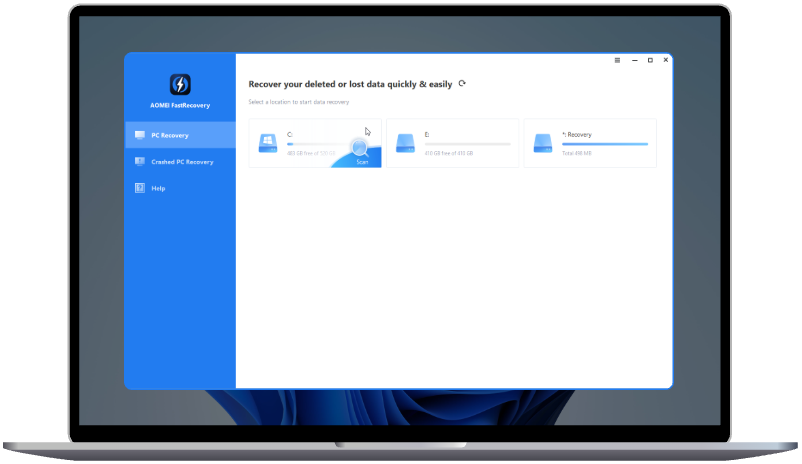Searching for Duplicate Files in Windows 10: Is There Any Easy and Quick Way?
When searching for duplicate files in Windows 10, you can use both Windows built-in tools and a duplicate file finder for Windows 10 cleaning. Read and follow it to remove duplicates!
When you notice numerous identical files scattered across various folders on your Windows 10 devices, it becomes necessary to search for and remove these duplicate files. Cleaning them can help free up space, maintain the organization, and improve computer performance. This passage shares you how to find duplicate files on Windows 10 PC in easy and effective ways.
4 ways for searching for duplicate files in Windows 10
To find duplicate files on Windows 10, Windows built-in tools such as File Explorer, Windows Search, Command Prompt, and a duplicate file finder for Windows 10 can all work out.
Way 1. Find duplicate files in Windows via File Explorer
Searching for duplicate files in Windows 10 can be realized by looking through the files one by one in File Explorer. If you don't want to use a special tool to find these piled-up duplicates, you can use the Windows built-in tool to get rid of them.
Step 1. Open "Indexing Options"
Go to the lower-left corner next to the Windows icon. Type "Indexing Options" into the search bar and then click on "Indexing Options".
Step 2. Search file locations
Click on "Modify" and select "Show all locations". A pop-up will appear, asking for your login details. Make sure you're using an administrator account when making changes here.
Step 3. Check selected locations of duplicate files
Check if all the boxes are ticked under the "Changed selected locations" section. If they are, click "OK," then hit the "Close" button. If not, make sure to check all the boxes.
Step 4. Open File Explorer and locate the files
Press the Windows and E keys together to open File Explorer, and then access your user account by navigating to Windows (C:) and selecting the Users folder for easier file location.
Step 5. Search the extensions of the target files
Click on "Search" in the upper-right corner, and enter the following extensions based on their format.
Step 6. Organize the search results by Name
• Under the "Panes" section, choose "Preview pane".
• Under the "Layout" section, select "Details".
• In the "Current view" section, click "Group by," and then pick "Name".
• To arrange the files in ascending order, click "Group by," and select "Ascending".
Step 7. Examine the files to find duplicates saved in different locations
Check the "Date modified" column to identify the latest version of each file.
After going through the files, choose the one you wish to remove and hit the Delete key on your keyboard.
Way 2. Run Windows Search to find and remove duplicate files
Windows Search is also a widely used utility for searching for duplicate files in Windows 10. It is similar to File Explorer, requiring you to be patient to find and remove them one by one.
Step 1. Access the Start menu and select Search. Then enter the folder name where your music collection is stored.
Step 2. Inside the folder, choose the View option and switch to Detail View. This will display the complete list of your audio files.
Step 3. Go to the Sort By option and choose the Name column. This will arrange your audio files alphabetically, making them easier to review.
Step 4. Examine each file closely to determine if they are true duplicates or if they just share a name but have different content. Once you've identified these inconsistent duplicates, delete them by selecting the Delete option.
Way 3. Use Command Prompt to search for duplicate files in Windows 10
If you are a Windows user familiar with commands, Command Prompt can be an easy way for you. However, since it can be somewhat risky and error-prone, it is not recommended for computer novices.
Step 1. Open CMD as an administrator. To do this, click on Start, then type "cmd" into the search bar, and choose “Run as administrator”.
Step 2. Type this command into CMD: "dir /s /b *.extension". Replace ".extension" with the type of files you want to find duplicates of. For example, if you're looking for duplicate JPG files, type "dir /s /b *.jpg".
Step 3. Press Enter. CMD will begin scanning for duplicate files, and it will display the results with duplicated files in a list.
- You can also find duplicate files using the “WMIC FINDSTR” command:
- 1. Open CMD and type "FINDSTR /?" to see all options for the "FINDSTR" command.
- 2. Type "FINDSTR /I /C:WINDOWS *.jpg" to search for all JPEG images in the WINDOWS folder.
- 3. The results will show all the JPEG images in the WINDOWS folder, with duplicates highlighted in red.
▌To remove duplicate files in a specific folder, follow these steps:
Step 1. Open the folder using File Explorer.
Step 2. Right-click on the folder you want and select "Copy as path".
Step 3. Open Command Prompt. Type "del /s /f *.duplicate" and hit Enter. This command will remove all duplicate files in the current folder and its subfolders.
For a more advanced file deletion, you can use wildcard characters with this command. Just type "rmdir /s /q DirName", and it will delete all folders in "DirName" and its subfolders.
Way 4. Remove duplicate files in Windows 10 with a professional tool (The quickest way)
File Explorer can be tiring, and Command Prompt might be challenging for some users. Is there any easy and quick way for searching for duplicate files in Windows 10? A renowned duplicate file finder for Windows 10, AOMEI Partition Assistant Professional can give you the answer “Yes, there is!” This all-in-one software is equipped with a Duplicate Files Finder feature.
This tool employs intelligent scanning methods to search for duplicate files quickly. It can even detect hidden duplicates and give you detailed reports to check. Before you delete any duplicate files, you can check them first to make sure you're not accidentally deleting something you need. This helps prevent unexpected data loss.
Step 1. Click the "Free up" on the main tab and select "Duplicate Files Finder".
Step 2. Here, all partitions on your computer will be displayed. You can personalize it and click "Scan".
Step 3. After the process is finished, all duplicate files that meet the conditions you set will be displayed. You can click the "Preview" button to see the duplicate files.
Step 4. You can select the duplicate files you want to delete. Or, click "Smart select" to automatically select duplicate files. Then, click "Move to folder".
Conclusion
Easily and quickly searching for duplicate files in Windows 10 can be realized with the help of AOMEI Partition Assistant. To keep your computer organized and clean, features like Delete Large Files, PC Cleaner, App Mover of this comprehensive software are worth trying as well. If you are a Windows Server user, you can choose AOMEI Partition Assistant Server to effectively manage your device.

